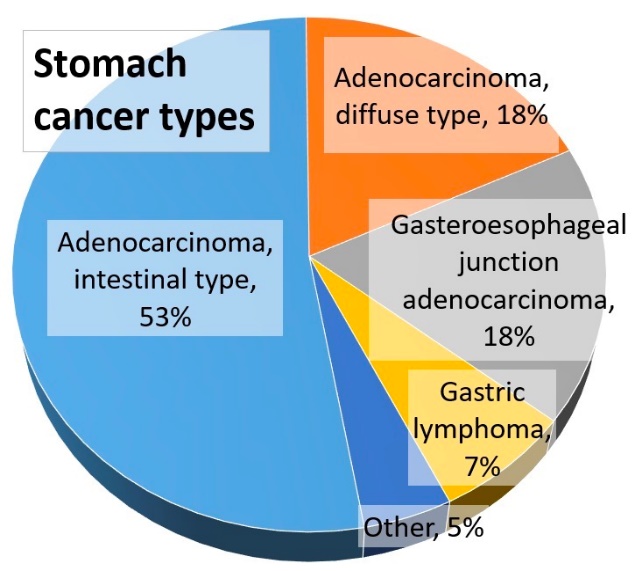Engineering Gastric Cancer Cells for Self-destruction
Self-destruction is a novel immunotherapeutic strategy for exploiting cancer cells against themselves. This strategy uses different technologies or assays to engineer gastric cancer cells to achieve cytokines overexpression and to assess the effect of self-destruction by different assays. Creative Biolabs offers state-of-the-art services for engineering gastric cancer cell lines for self-destruction that meet your specific tumor research needs.
Background of Gastric Cancer
Gastric cancer, also known as stomach cancer, is cancer that develops from the lining of the stomach. Gastric cancer is the fourth commonest cause of cancer death in Europe. On a global scale, gastric cancer remains the world's second commonest malignancy. There is substantial international variation in gastric cancer incidence with the highest rates reported from Korea, Japan, and eastern Asia. The global burden of gastric cancer is shifting rapidly from the developed world to the developing world. Despite the worldwide decline in incidence and the major improvements in diagnosis and treatment, less than 20% of patients survive to 5 years. Cancer may spread from the stomach to other parts of the body, particularly the liver, lungs, bones, lining of the abdomen, and lymph nodes.
-
Signs and symptoms
Nausea, vomiting, diarrhea, constipation, and weight loss.
-
Risk factors
Infections, smoking, alcohol, diet and genetics.
 Distributed under CC0, from Wiki.
Distributed under CC0, from Wiki.
Main Cell Lines of Engineering Gastric Cancer
-
BGC-823
BGC-823 was first reported as the human gastric adenocarcinoma cell line. However, the STR DNA analysis pattern of BCG-823 showed contamination with the HeLa cell line.
-
GES-1
GES-1 cells are an immortalized human gastric epithelial cell line.
-
AGS
AGS is one of the most common cell lines for the xenograft modeling of gastric cancer. It can provide an opportunity to understand the pattern of tumor growth as well as to evaluate new gastric cancer therapies in in vivo studies.
-
MKN
The gastric cancer cell MKN, a human gastric adenocarcinoma, is established from the poorly differentiated adenocarcinoma of the stomach (medullary type) of a 62-year-old woman.
-
SNU-216
The SNU-16, a cell line exhibiting epithelial morphology, was isolated in 1987 from ascites derived from a 33-year-old, female, Asian, stomach cancer patient prior to chemotherapy. It has been used in cancer research.
Our Services
Creative Biolabs has extensive experience in gastric cancer cell models and gastric cancer immunobiology. We offer a full-scale range of self-destruction services to meet your scientific needs. Below is a workflow of our engineering cancer cell for self-destruct strategy.
 Fig.2 Workflow of engineering gastric cancer cells for self-destruction.
Fig.2 Workflow of engineering gastric cancer cells for self-destruction.
With a team of scientists who come from different research backgrounds, Creative Biolabs guides you all the way from project inception to high-quality results. For more cancer cell lines for self-destruction, please visit the unit of Engineering Cancer Cells for Self-destruction. If you have interest, please do not hesitate to contact us.
For Research Use Only | Not For Clinical Use



 Fig.2 Workflow of engineering gastric cancer cells for self-destruction.
Fig.2 Workflow of engineering gastric cancer cells for self-destruction.
 Download our brochure
Download our brochure

